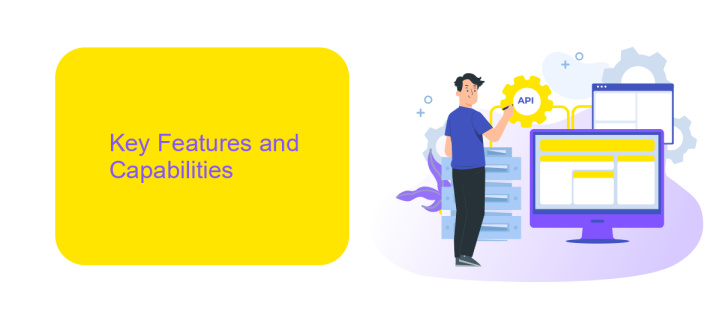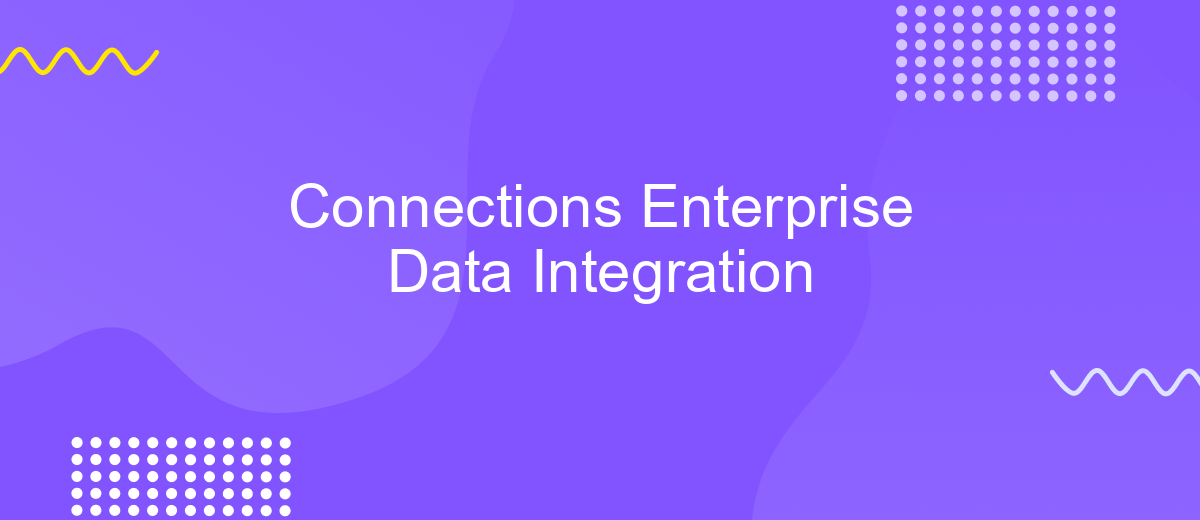Connections Enterprise Data Integration
In today's rapidly evolving digital landscape, effective data integration has become crucial for enterprises seeking to harness the full potential of their information assets. Connections Enterprise Data Integration offers a comprehensive solution that seamlessly unifies disparate data sources, enabling organizations to streamline operations, enhance decision-making, and drive innovation. By breaking down data silos, this approach empowers businesses to achieve greater agility and maintain a competitive edge.
Introduction to Connections Enterprise Data Integration
In today's rapidly evolving digital landscape, the ability to seamlessly integrate enterprise data across various platforms is crucial for maintaining a competitive edge. Connections Enterprise Data Integration (CEDI) offers a robust framework that enables organizations to unify disparate data sources, ensuring consistent and accurate information flow. By leveraging advanced integration techniques, businesses can enhance decision-making, improve operational efficiency, and drive innovation.
- Streamlined data management processes
- Enhanced data accuracy and consistency
- Improved collaboration across departments
- Scalability to accommodate growing data needs
- Increased agility in responding to market changes
Implementing CEDI allows organizations to break down silos, fostering a more connected and agile enterprise. By providing a comprehensive solution for data integration, CEDI not only supports current business objectives but also lays the groundwork for future growth and transformation. As companies continue to navigate the complexities of the digital age, embracing effective data integration strategies will be key to unlocking new opportunities and achieving long-term success.
Key Features and Capabilities

Connections Enterprise Data Integration provides a robust platform designed to streamline data connectivity across various systems. Its key features include seamless integration capabilities that allow businesses to connect disparate data sources effortlessly. The platform supports a wide range of data formats and protocols, ensuring compatibility with existing IT infrastructures. This adaptability simplifies the process of data synchronization, enabling real-time data access and enhancing decision-making processes.
Another significant capability is the platform's user-friendly interface, which empowers users to configure complex integrations with minimal technical expertise. Services like ApiX-Drive enhance this functionality by offering automated workflows that simplify the integration process even further. Users can benefit from pre-configured templates and intuitive drag-and-drop tools, reducing the time and effort required to establish connections. Additionally, the platform provides comprehensive monitoring and reporting tools to ensure data integrity and security throughout the integration lifecycle, making it a reliable choice for enterprises seeking efficient data management solutions.
Benefits and Use Cases

Enterprise data integration is pivotal in today's digital landscape, offering numerous benefits and diverse use cases. By seamlessly connecting disparate data sources, organizations can achieve a unified view of their information, enhancing decision-making and operational efficiency. This integration facilitates real-time data access, enabling businesses to respond swiftly to market changes and customer needs.
- Improved Data Accuracy: Integration ensures data consistency across systems, reducing errors and redundancies.
- Enhanced Collaboration: Teams can access shared data, fostering collaboration and innovation.
- Cost Efficiency: Streamlining data processes reduces operational costs and resource allocation.
- Scalability: Easily integrate new data sources as the organization grows, ensuring continuous data flow.
Use cases for enterprise data integration are vast and varied. In healthcare, it enables patient data consolidation for better treatment outcomes. In finance, it ensures compliance by integrating regulatory data. Retailers use it for personalized marketing by analyzing customer behavior. Ultimately, enterprise data integration empowers organizations to harness their data's full potential, driving growth and competitiveness in an increasingly connected world.
Implementation and Integration

Implementing and integrating enterprise data solutions requires a strategic approach to ensure seamless connectivity and functionality. The process begins with a thorough assessment of existing systems and data flows. This assessment helps in identifying the specific needs and challenges that the integration must address. By understanding these requirements, businesses can tailor their integration strategy to align with organizational goals.
Next, selecting the right tools and technologies is crucial for successful integration. These tools should support various data formats and protocols, ensuring compatibility across different platforms. Additionally, they should offer robust security features to protect sensitive information during data transfer. Once the tools are selected, the integration process can begin in earnest.
- Conduct a comprehensive system analysis to identify integration points.
- Select integration tools that support multiple data formats and protocols.
- Ensure data security with encryption and access controls.
- Test the integration thoroughly to identify and resolve issues.
Finally, continuous monitoring and optimization are vital to maintain the efficiency of the integrated system. Regular updates and audits can help in identifying potential bottlenecks and areas for improvement. By adopting a proactive approach, businesses can ensure that their enterprise data integration remains effective and aligned with evolving needs.
Conclusion and Future Directions
In conclusion, the landscape of enterprise data integration is rapidly evolving, driven by the increasing need for efficient and agile solutions. As organizations continue to expand their digital ecosystems, the demand for seamless data connectivity across diverse platforms becomes paramount. The adoption of modern integration tools and platforms, such as ApiX-Drive, plays a crucial role in simplifying and automating these processes. By offering user-friendly interfaces and robust functionalities, ApiX-Drive empowers businesses to configure integrations effortlessly, ensuring data consistency and reliability.
Looking ahead, the future of enterprise data integration will likely be shaped by advancements in artificial intelligence and machine learning. These technologies promise to enhance data processing capabilities, enabling more intelligent and predictive integrations. Additionally, the rise of cloud-based solutions will further facilitate scalable and flexible integration strategies. Organizations must stay abreast of these developments to harness the full potential of their data assets, driving innovation and maintaining competitive advantage in an increasingly data-driven world.
FAQ
What is Enterprise Data Integration?
How can data integration benefit my business?
What are the common challenges in Enterprise Data Integration?
How do I choose the right data integration tool?
Is it necessary to have technical expertise for implementing data integration?
Routine tasks take a lot of time from employees? Do they burn out, do not have enough working day for the main duties and important things? Do you understand that the only way out of this situation in modern realities is automation? Try Apix-Drive for free and make sure that the online connector in 5 minutes of setting up integration will remove a significant part of the routine from your life and free up time for you and your employees.

